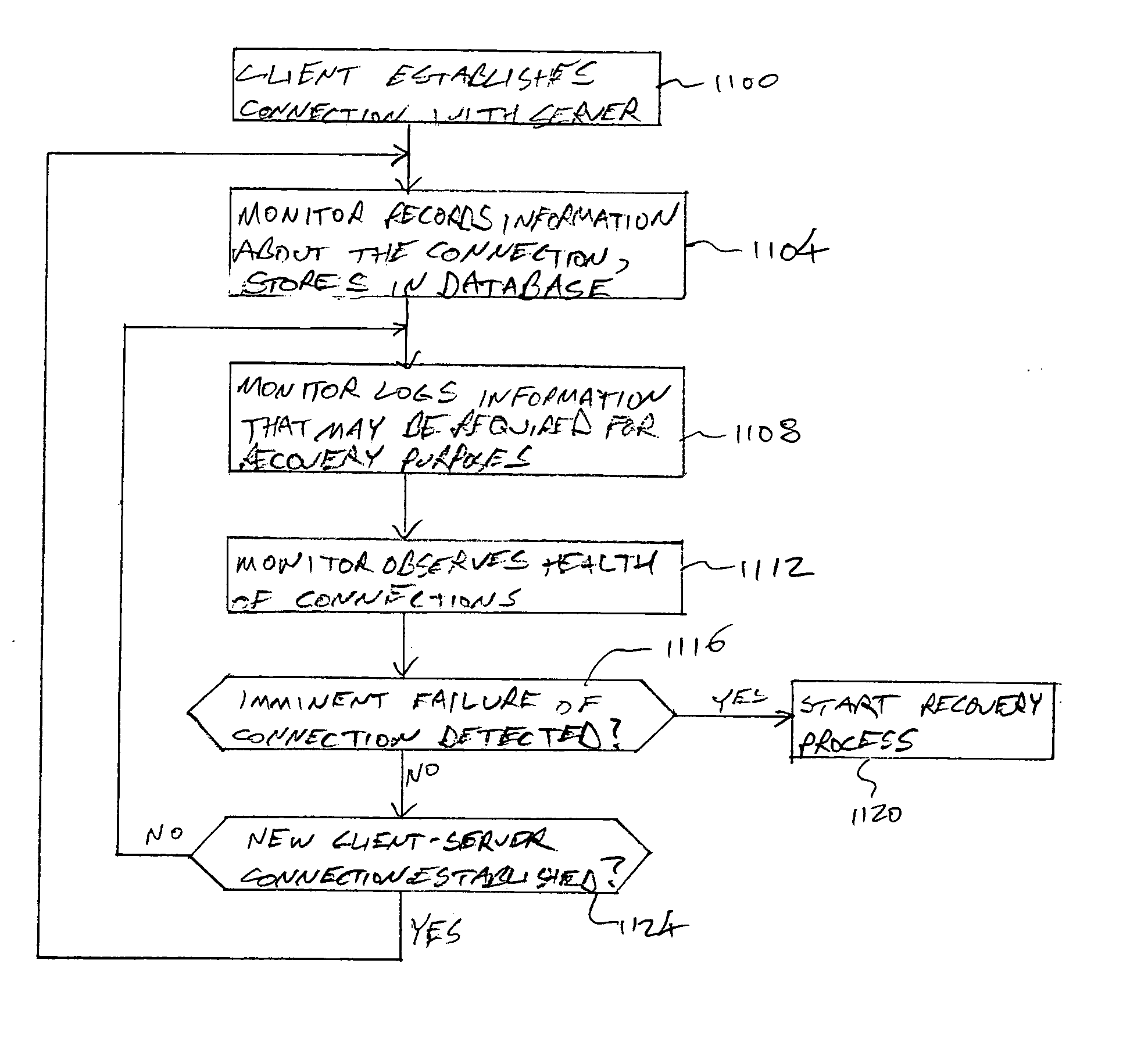Techniques for client-transparent TCP migration
a client-transparent, tcp technology, applied in the field of migration of tcp connections, can solve the problems of bogging down performance, complicating the design of enhancements, and facing adoption challenges of enhancements, and achieve the effect of enhancing the reliability of unreliable servers and increasing the resiliency of secure connections
- Summary
- Abstract
- Description
- Claims
- Application Information
AI Technical Summary
Benefits of technology
Problems solved by technology
Method used
Image
Examples
Embodiment Construction
[0040] With reference now to FIG. 1, components of a recovery system 100 in accordance with embodiments of the present invention are illustrated. As shown in FIG. 1, the recovery system 100 generally comprises a monitor 104 and a recovery server 108. In addition, the recovery system 100 may include or be associated with a database 112. The recovery system 100 is generally deployed in connection with a server 116 that serves one or more clients 120a-c. In addition, a backup server 124 may be provided.
[0041] During normal operation, the clients 120 may establish connections 128 with the server 116. In particular, the clients 120 may connect to ports 132. The ports 132 may be provided as part of or in association with an IP number 136 for the server 116. The IP number may be an actual IP number visible to the clients 120, or it may be a virtual IP number translated by front end routers and switches to an appropriate host.
[0042] In accordance with embodiments of the present invention,...
PUM
 Login to View More
Login to View More Abstract
Description
Claims
Application Information
 Login to View More
Login to View More - R&D
- Intellectual Property
- Life Sciences
- Materials
- Tech Scout
- Unparalleled Data Quality
- Higher Quality Content
- 60% Fewer Hallucinations
Browse by: Latest US Patents, China's latest patents, Technical Efficacy Thesaurus, Application Domain, Technology Topic, Popular Technical Reports.
© 2025 PatSnap. All rights reserved.Legal|Privacy policy|Modern Slavery Act Transparency Statement|Sitemap|About US| Contact US: help@patsnap.com



